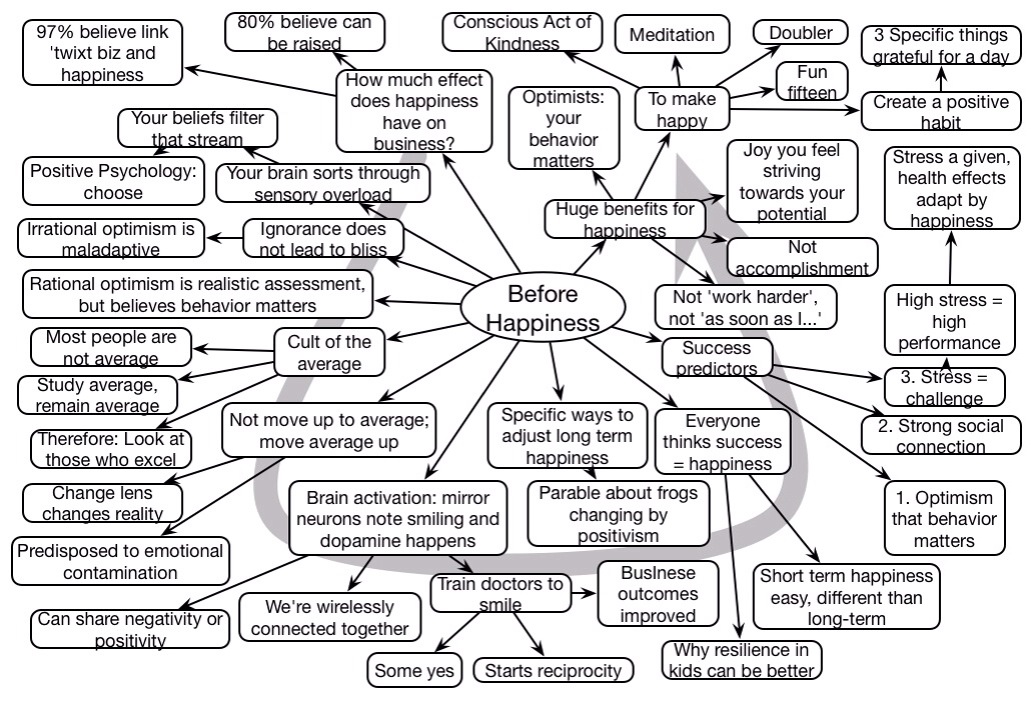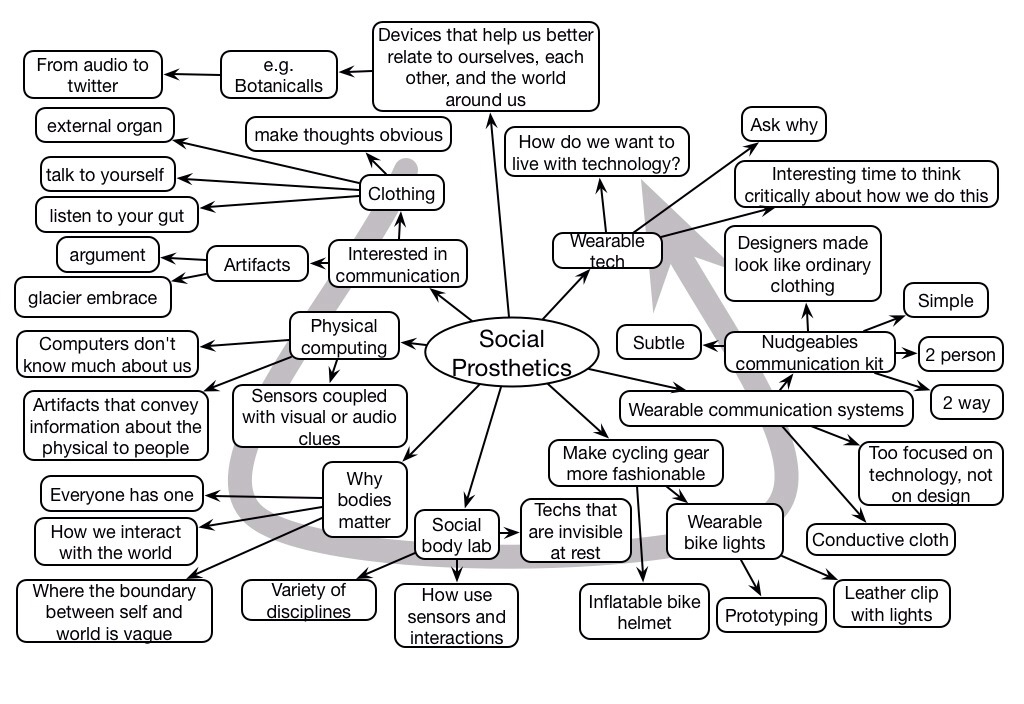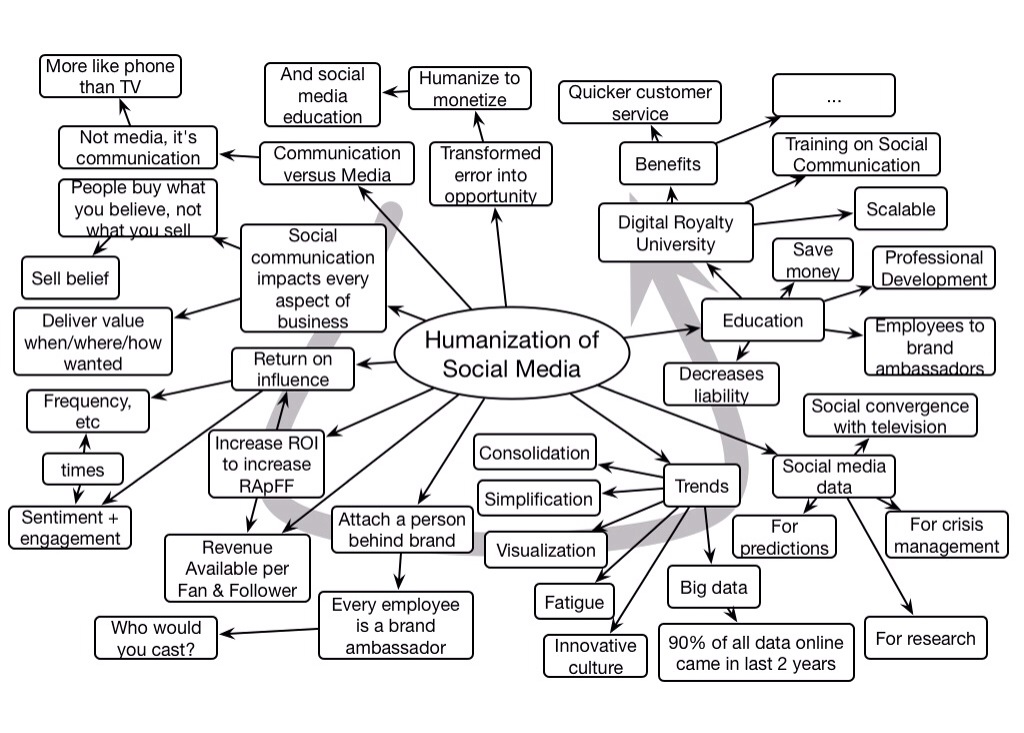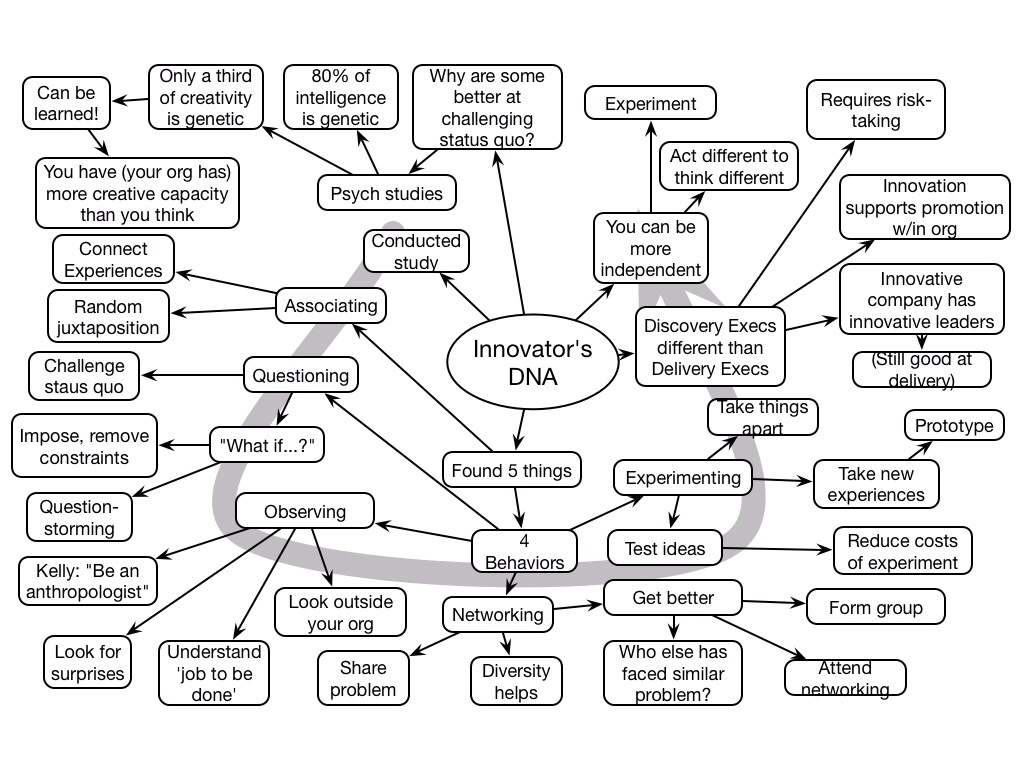Shawn Achor gave a rapidfire, amusing, and engaging presentation about the benefits of happiness and ways to cultivate it.
Starting trouble
This seems to be my year of making trouble, and one of the ways is talking about what L&D is and isn’t doing. As a consequence of the forthcoming book (no cover comps yet nor ability to preorder), I’ve had to put my thoughts together, and I’m giving the preliminary version next Thurs, February 6, at 11AM PT, 2PM ET as a webinar for ASTD.
The gist is that there are a number of changes L&D is not accommodating: changes in how business should be run, changes in understanding how we think and perform, and even our understanding of learning has advanced (at least beyond the point that most of our corporate approaches seem to recognize). Most L&D really seems stuck in the industrial age, and yet we’re in the information age.
And this just doesn’t make sense! We should be the most eager adopters of technology, staying on top of new developments and looking for their potential to support our organizations. We should be leading the charge in being learning organizations: following the business precepts of experimenting regularly, failing fast, and reflecting on the outcomes. Yet that doesn’t reflect what the we’re seeing.
To move forward, we need to do more. To address business needs, we need to consider performance support and social networks. In fact, I argue that these should be our first line of defense, and courses should only be used when a significant skill shift is required. We should be leveraging technology more effectively, looking at semantics and content architectures as well as mobile and contextual opportunities. And we need to be getting strategic about how we’re helping the organization and evaluating not just efficiency but our effectiveness and impact.
This is just the start of a rolling series of activities trying to inject a sense of urgency into L&D (change management step 1). While this will be covered in print, in sessions starting with last week’s TK14, and continuing through Learning Solutions and ICE, here’s a chance to get a headstart. Look for a followup somewhere around April. Hope you’ll join us!
Kate Hartman #ASTDTK14 Keynote Mindmap
Amy Jo Martin #ASTDTK14 Keynote Mindmap
Jeff Dyer #ASTDTK14 Keynote Mindmap
Mac memories
This year is the 30th anniversary of the Macintosh, and my newspaper asked for memories. I’ll point them to this post ;).
As context, I was programming for the educational computer game company, DesignWare. DesignWare had started out doing computer games to accompany K12 textbooks, but I (not alone) had been arguing about heading into the home market, and happened to run into Bill Bowman and David Seuss at a computer conference, who’d started Spinnaker to sell education software to the home market, and were looking for companies that could develop product. I told them to contact my CEO, and as a reward I got to do the first joint title, FaceMaker. When DesignWare created it’s own titles, I got to do Creature Creator and Spellicopter before I headed off to graduate school for my Ph.D. in what ended up being, effectively, applied cognitive science.
While I was at DesignWare, I had been an groupie of Artificial Intelligence and a nerd around all things cool in computers, so I was a fan of the work going on at Xerox Palo Alto Research Center (aka Parc), and followed along in Byte magazine. (I confess that, at the time, I was a bit young to have been aware of the mother of all demos by Doug Engelbart and the inspiration of the Parc work.) So I lusted after bitmap screens and mice, and the Lisa (the Mac predecessor).
My Ph.D. advisor, Donald Norman, had written about cognitive engineering and the research lab I joined was very keen on interface design (leading to Don’s first mass-market and must-read book, The Psychology of Everyday Things, subsequently titled The Design of Everyday Things, and a compendium of writings call User-Centered System Design). He was, naturally, advising Apple. So while I dabbled in meta-learning, I was right there at the heart of thinking around interface design.
Naturally, if you cared about interface design, had designed engaging graphic interfaces, and had watched how badly the IBM PC botched the introduction of the work computer, you really wanted the Macintosh. Command lines were for those who didn’t know better. When the Macintosh first came out, however, I couldn’t justify the cost. I had access to Unix machines and the power of the ARPANET. (The reason I was originally ho-hum about the internet was that I’d been playing with Gopher and WAIS and USENET for years!)
I finally justified the purchase of a Mac II to write my PhD thesis on. I used Microsoft Word, and with the styles option was able to meet the rigorous requirements of the library for theses without having to pay someone to type it for me (a major victory in the small battles of academia!). I’ve been on a Macintosh ever since, and have survived the glories of iMacs and Duos (and the less-than stellar Performa). And I’ve written books, created presentations, and brainstormed through diagrams in ways I just haven’t been able to on other platforms. My family is now also on Macs. When the alternative can be couched as the triumph of marketing over matter, there really has been little other choice. Happy 30th!
Gaming Learning
Remember the game Where in the World Is Carmen San Diego? The game had you chasing an international fugitive, and you had to decipher clues about world facts to figure out where to go next to catch her, using an included world almanac. The claim for learning was that it developed knowledge of world facts. And that was patently shown to be wrong by Cathie Sherwood, then at Griffith University (if memory serves). What she showed was that kids learned how to use an almanac, but didn’t remember the information pointed to by the clues. And this is a consistent problem with educational software.
I’ve been thinking about games for the simple reason that I’m keynoting and doing a panel and a session about gaming and learning at NexLearn’s Immersive Learning University conference next week. I’ll be talking about how to design them, and lessons from games for the design of learning and assessment. So when I read this recent article, while generally supportive, I had a problem.
The good thing with the article is that it argues that we should be doing more with games to support learning, and I couldn’t agree more. When properly designed, games provide deep and meaningful practice. And we could be tapping into much more of the facets of games for designing learning experiences. Challenge, decisions, and consequences in a safe environment.
So what bothered me? At one point, the article does on about what skills are required in computer games, things like problem-solving, strategy, etc. And, yes, games do require those skills. However, what many have done wrongly is say that the games develop those skills, and this is wrong. For instance, when Kurt Squire was touting the learning outcomes of Civilization, it came from a teacher who scaffolded that understanding, not intrinsically from the game. Similarly, when my kids were playing Pajama Sam (a great series of games with interesting stories and appropriate challenges), we were scaffolding the learning.
For some, requiring skills will develop them. For the 10% or so who survive despite what we do to them ;). But if you want to be sure they’re getting developed, you need to do more than require them, you need to scaffold them. And we could do this if we wanted to. But we don’t. The existence of coaching for higher-level learning skills in the game environment is essentially non-existent. And I just think this is a shame. (Many years ago I was proposing research to develop a coaching environment on top of a game engine, so it could be available in any game designed with that engine, but of course it was deemed too ambitious. Hmmph.)
And don’t get me wrong, the article didn’t make wrong statements, it just reminded me of the problem that has bugged me and also I think damaged the industry (think: why is the term ‘edutainment’ tainted?). But we need to be careful what we say and how we talk about it. We can develop meaningful learning games, but we have to know how to do it, not just put game and instructional designers in a room together and expect them to know how to create a success. You need to understand the alignment of elements of learning and leverage those to achieve success. Don’t settle for less.
Intelligent Content
I’ve been on the content rant before, talking about the need to structure content into models, and the benefits of tagging. Now, there’s something you can do about it.
You have to understand that folks who do content as if their business depended on it, e.g. web marketers, have a level of sophistication that elearning (and all elearning: performance support, social, etc) would do well to adopt. The power of leveraging content by description, not by link, is the basis for adaptive, custom, personalized experiences. But it takes a lot of knowledge and work, and a strategy.
You’ve seen it in Netflix and Amazon recommendations, and sites that support powerful searches. We can and should be doing this for learning and performance, whether pull or push. But where do you learn?
One of the people I follow is Scott Abel, the Content Wrangler. And he’s put together the Intelligent Content Conference that will give you the opportunities you need to get on top of this. This isn’t necessarily for the independent instructional designer, but if you do elearning as a business, whether a publisher or custom content house, or if you’re looking for the next level of technical sophistication, this is something you really should have on your radar.
Full disclosure: I will be on a press pass to attend, but they didn’t reach out to me. I reached out to them because I wanted a way to attend. Because I know this is important enough to find a way to hear more. I don’t have a set company I work for, so if I want to know this stuff to be able to help people take advantage of it, I have to earn my keep (in this case, by writing an article afterward). I only feel it fair, however, that if I think it’s important enough to finagle a way to attend, I should at least let you know about it.
(And, fair warning, if you do lob something at me, expect to join the many who have received a firm refusal, on principle. I’m not in the PR business. As I state in my boilerplate response: “I deliberately ignore what comes unsolicited, and instead am triggered by what comes through my network: Twitter, Facebook, LinkedIn, Skype, etc.”. Save us both time and don’t bother.)
Social ROI?
Ok, so I’ve been thinking about this, but not sure what the current state of play is. Someone was stating that talking about ROI of the social network was important but hard to do now, and essentially wondered if there was new thinking in this area. So let me ask the question.
So I’m calling out L&D because they’re only measuring efficiency when they should be measuring impact. You look at measures used to evaluate the industry, and they’re things like cost/time/seat. Which is potentially a useful measure, but only after you’ve decided that having a bum in the seat is having a positive impact on the organization. If you’re not doing something measurable – decreasing time to close sales or increasing the number of problems resolved accurately on the first call – it doesn’t matter how efficient you are!
With social media, I believe it’s the same thing. If we put in social media and facilitate discussion in engineering, we’d expect a different impact than in manufacturing. In engineering we might get less time to design a requested feature, and in manufacturing we might increase usable yield. It really doesn’t matter if you’re seeing more use of the system, more messages or connections or what have you, if you’re not seeing an impact. Of course, if you can correlate them, all the better.
Sure, we also might affect indirect metrics – retention, workplace satisfaction, or customer satisfaction – with tangible value, but our real focus should be on direct metrics. If creating a more effective culture for sharing, and sharing is supposed to lead to better outcomes, it sure would be nice to demonstrate those benefits. I guess my experience with instructional design – if you design it according to the formula, it is good – leads me to some skepticism that we can just trust the outcome.
So, is this obvious, or are we still wrestling with this? Other opinions?
Making Mobile Mayhem
As I suggested in my post on directions for the year, I intend to be stirring up a bit of trouble here and there. On a less formal basis, I want to suggest that another area where we need a little more light and a little less heat (and smoke) is mobile. There is huge opportunity here, and I am afraid we are squandering it.
We’re doing a lot wrong when it comes to mobile. As Jason Haag has aptly put it, elearning courses on a phone (or tablet) is mobile elearning, not mobile learning (aka mlearning). And while there’s an argument for mobile elearning (at least on tablets), and strong case for augmenting formal learning with mobile (regardless of device), mobile elearning is not mlearning’s natural niche.
mLearning’s natural niche is performance support, whether through content (interactive or not), or social. Think about how you use your phone? When I ask this of attendees, they’re using them to get information in the moment, or find their way, or capture information. They’re not using them to take courses!
So we need to be thinking outside the course. To help, we need case studies, across business sectors, and across the areas. Which means we need people to be getting their hands on development tools.
Which is a second problem: the tools that are easiest to use are being used to create courses. The elearning tools we use are increasingly having mobile output, but it’s too easy to then just output courses. It turns out one of the phenomena that characterize our brains is ‘functional fixedness’, we use a tool in the way we’ve used it before. Yet we can use these tools to do other things. And there are tools more oriented towards performance support. Anything that creates content or interactivity can be used to build performance support, but we have to be doing it!
There’s more that we need to be doing in the background – content, governance, strategy – but we need to get our minds around mobile solutions to contextual needs, and start delivering the resources people need. Mobile is big; the devices are out there, and they’re a platform for so much; we need to capitalize.
The place where you’re going to be able to see the case studies and explore the tools and start getting your mind around mobile will be this summer’s mLearnCon (in San Diego in June!). And you really should be going. Also, if you are doing mobile, you really should be submitting to present. We need more examples, more ideas, more experience! (If you need help writing a proposal, I’ve already written a guide.)
Really, presenting is a great contribution to yourself and the industry, and we really could use it. Help us make mobile mayhem by showing the way. Or, of course, join us at the conference to get ready to mix it up. Hope to see you there.



